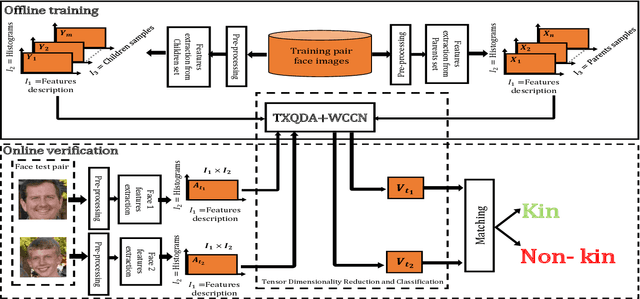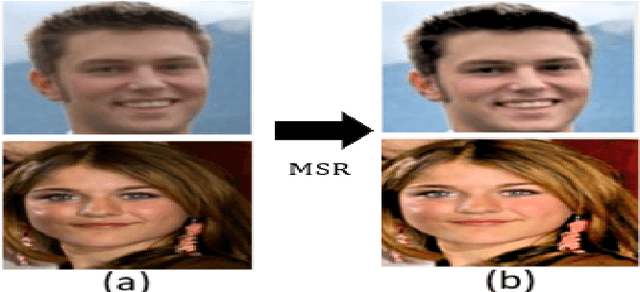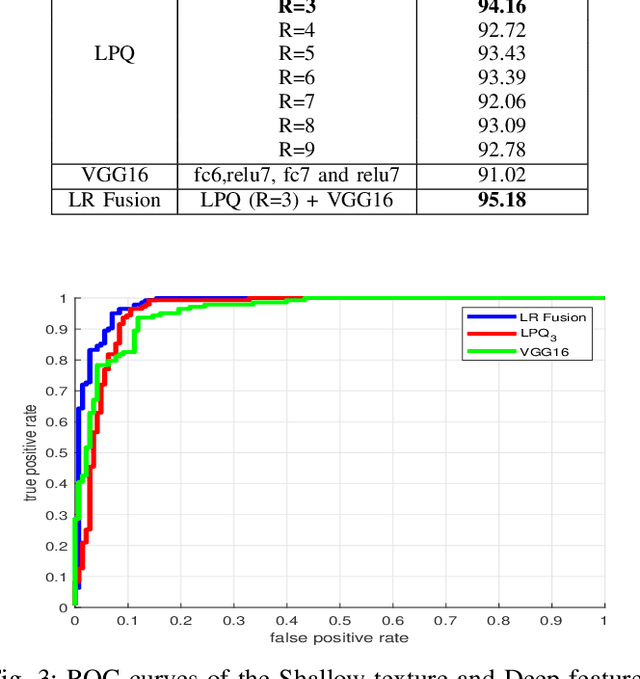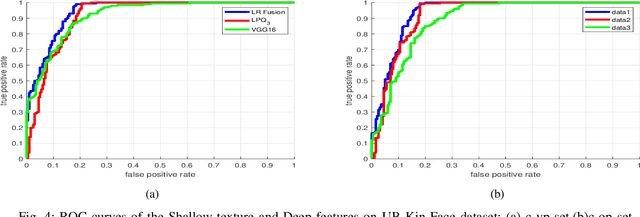Mohcene Bessaoudi
A Powerful Face Preprocessing For Robust Kinship Verification based Tensor Analyses
Dec 18, 2023Abstract:Kinship verification using facial photographs captured in the wild is difficult area of research in the science of computer vision. It might be used for a variety of applications, including image annotation and searching for missing children, etc. The largest challenge to kinship verification in practice is the fact that parent and child photos frequently differ significantly from one another. How to effectively respond to such a challenge is important improving the efficiency of kinship verification. For this purpose, we introduce a system to check relatedness that starts with a pair of face images of a child and a parent, after which it is revealed whether two people are related or not. The first step in our approach is face preprocessing with two methods, a Retinex filter and an ellipse mask, then a feature extraction step based on hist-Gabor wavelets, which is used before an efficient dimensionality reduction method called TXQDA. Finally, determine if there is a relationship. By using Cornell KinFace benchmark database, we ran a number of tests to show the efficacy of our strategy. Our findings show that, in comparison to other strategies currently in use, our system is robust.
Enhancing Person Re-Identification through Tensor Feature Fusion
Dec 16, 2023Abstract:In this paper, we present a novel person reidentification (PRe-ID) system that based on tensor feature representation and multilinear subspace learning. Our approach utilizes pretrained CNNs for high-level feature extraction, along with Local Maximal Occurrence (LOMO) and Gaussian Of Gaussian (GOG ) descriptors. Additionally, Cross-View Quadratic Discriminant Analysis (TXQDA) algorithm is used for multilinear subspace learning, which models the data in a tensor framework to enhance discriminative capabilities. Similarity measure based on Mahalanobis distance is used for matching between training and test pedestrian images. Experimental evaluations on VIPeR and PRID450s datasets demonstrate the effectiveness of our method.
Fusion of Deep and Shallow Features for Face Kinship Verification
Dec 16, 2023Abstract:Kinship verification from face images is a novel and formidable challenge in the realms of pattern recognition and computer vision. This work makes notable contributions by incorporating a preprocessing technique known as Multiscale Retinex (MSR), which enhances image quality. Our approach harnesses the strength of complementary deep (VGG16) and shallow texture descriptors (BSIF) by combining them at the score level using Logistic Regression (LR) technique. We assess the effectiveness of our approach by conducting comprehensive experiments on three challenging kinship datasets: Cornell Kin Face, UB Kin Face and TS Kin Face
Enhancing Kinship Verification through Multiscale Retinex and Combined Deep-Shallow features
Dec 06, 2023



Abstract:The challenge of kinship verification from facial images represents a cutting-edge and formidable frontier in the realms of pattern recognition and computer vision. This area of study holds a myriad of potential applications, spanning from image annotation and forensic analysis to social media research. Our research stands out by integrating a preprocessing method named Multiscale Retinex (MSR), which elevates image quality and amplifies contrast, ultimately bolstering the end results. Strategically, our methodology capitalizes on the harmonious blend of deep and shallow texture descriptors, merging them proficiently at the score level through the Logistic Regression (LR) method. To elucidate, we employ the Local Phase Quantization (LPQ) descriptor to extract shallow texture characteristics. For deep feature extraction, we turn to the prowess of the VGG16 model, which is pre-trained on a convolutional neural network (CNN). The robustness and efficacy of our method have been put to the test through meticulous experiments on three rigorous kinship datasets, namely: Cornell Kin Face, UB Kin Face, and TS Kin Face.
 Add to Chrome
Add to Chrome Add to Firefox
Add to Firefox Add to Edge
Add to Edge